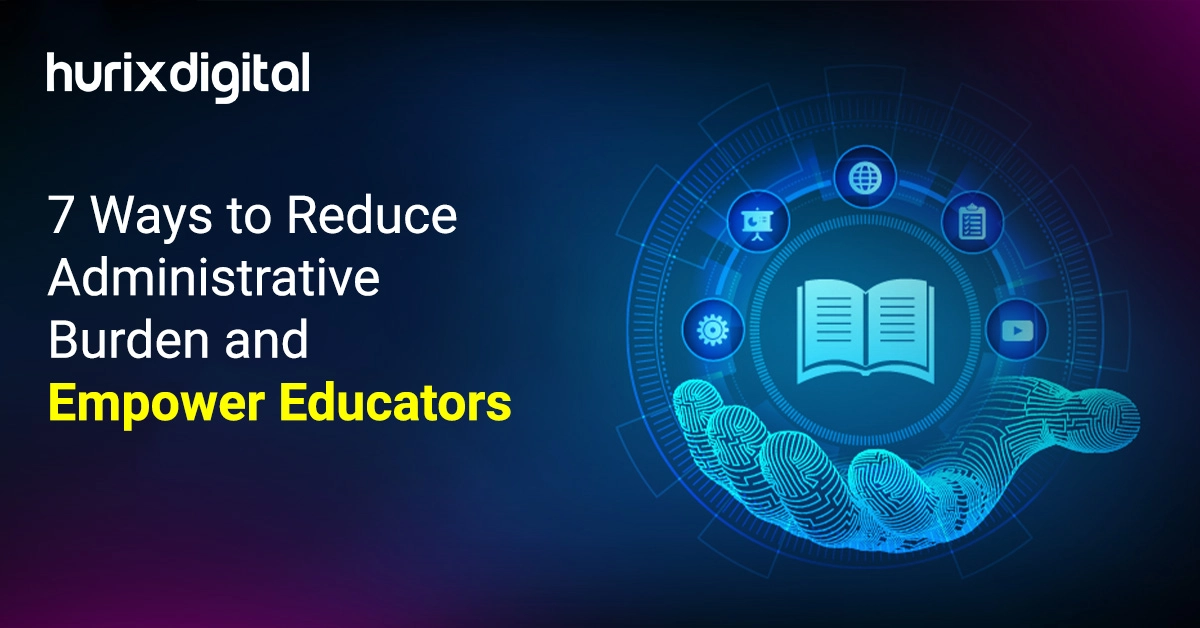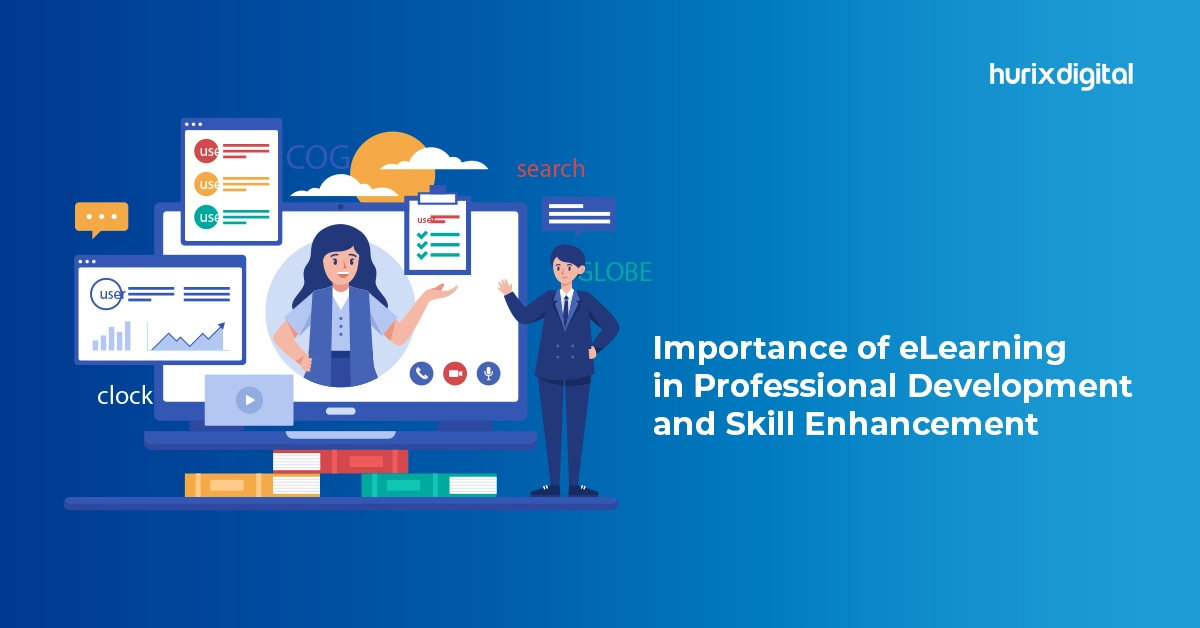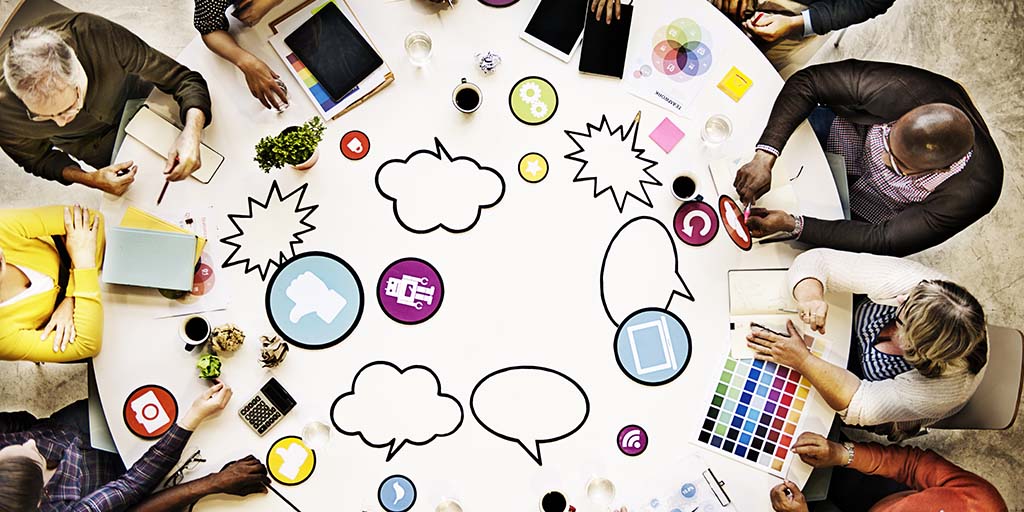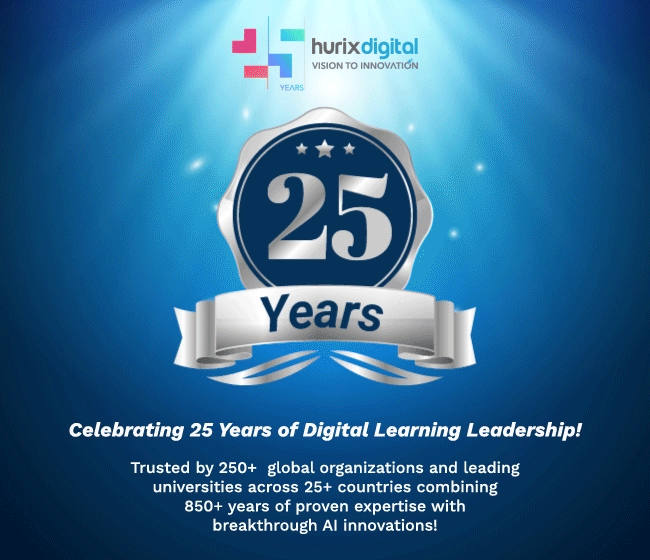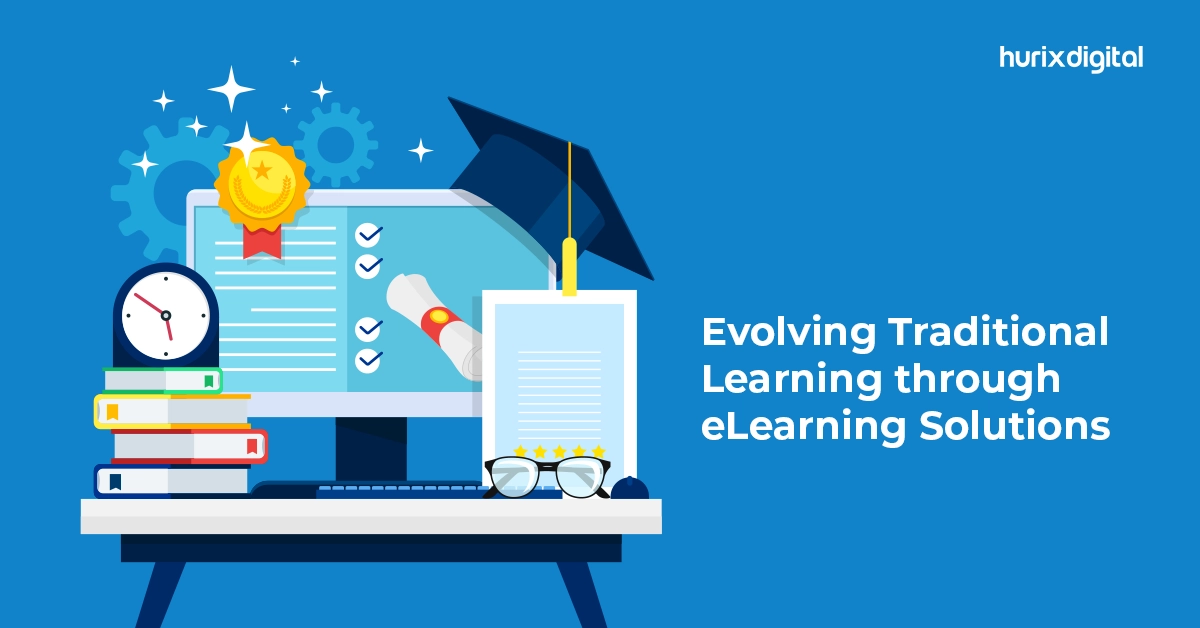
Evolving Traditional Learning through eLearning Solutions
Summarize with:
The world of workforce learning is constantly evolving. With learner preferences and business needs dictating the pace and delivery forms, organizations worldwide are adopting more innovative eLearning solutions and floating further away from what used to be called traditional learning methodologies.
Emerging as a powerful catalyst for change, with a global e-learning market size of 316.2 billion dollars in 2023, learning solutions are in huge demand for their flexibility, accessibility, and easy personalization features. Amidst this boom, traditional learning methods on every higher learning level are influenced to adapt. As a result, we are seeing a transformation in the traditional standards.
This article explores five key aspects of how eLearning is transforming traditional standards along with the challenges and opportunities that the learning modules place on traditional learning methodology.
Table of Contents:
- A Quick Recap: eLearning vs Traditional Learning
- Key Areas that eLearning Has Created an Impact
- Challenges that Surface to Evolve Traditional Learning
- Transforming the Traditional Learning Methodology
A Quick Recap: eLearning vs Traditional Learning
Before we dive into how learning has created an impact on traditional learning, let’s understand what both approaches are about. Here is a quick comparison:
| Feature | eLearning | Traditional Learning |
| Location | Online, anywhere with internet access | Physical classroom |
| Pacing | Often self-paced, flexible scheduling | Instructor-led pace, set schedule |
| Content Delivery | Multimedia formats | Lectures, textbooks, classroom discussions |
| Accessibility | Dependent on the learning modules’ accessibility standard, often more diverse | Depends on the assistive technology available or used. |
With the clear distinctions in mind, it is also important to remember that the stark contrast of the young and progressive eLearning solutions heavily influences the traditional learning approach. This influence comes to life off of not just the evolving needs of the learners and businesses, but also how the niche industry grows.
Also Read: Crafting Your eLearning Journey: 7 Simple Steps to Course Development
Key Areas that eLearning has Created an Impact
With the several factors that cause learning to impact traditional methodologies, let’s dive deeper into how exactly the learning landscape changes. Here are four key ways learning impacts traditional learning methods,
1. Expectations and Learning Styles
One key way eLearning has influenced education is by allowing learners flexibility and control over their learning journey. In this approach, learners can select or set learning modules to match their pace and timing and relieve them of geographical barriers.
Through AI-powered eLearning solutions, personalized and adaptive content is created tailored to their needs and learning styles. Access to engaging multimedia experiences in addition to the increased growth and clarity on how they wish to learn, expectations from traditional learning approaches have evolved.
Through these developments in the educational space, traditional models that once resorted to text-based fixed curricula are now driven to offer more choice and customization.
2. The Educator’s Role in Education
The understanding of the educator’s role was once to create and deliver learning content to large batches of learners. eLearning solutions have introduced free access to libraries and online resources, creating an abundance of information in clear learning modules. This abundance reduces the overall value of an educator’s role as a source of knowledge.
That said, the abundance in the eLearning space recreates the meaning of curation. With traditional learning methods having to elevate their resource base, an educator now takes on the role of a facilitator, curator, and personalized mentor.
eLearning solutions create a requirement for educators to focus on helping students navigate the learning landscape and personalized support, feedback, and mentorship to ensure learners stay engaged and on track, especially in a less structured environment. This often requires educators to reassess their skills as mentors and facilitators with necessary control over technological developments.
3. Classroom Dynamics
One of the most prominent ways eLearning influences traditional learning methods is by transcending the conventional classroom. Less reliance on traditional content formats paves the way for more active learning approaches.
Additionally, eLearning has mitigated geographical barriers, making collaborative projects, problem-solving activities, and discussions more prominent. It also allows online assessments, quizzes, and practice modules to be seamlessly integrated. Through an eLearning solution that delivers immediate feedback, classroom dynamics take on a healthy competitive atmosphere.
Here are two trending delivery methods that showcase how traditional learning methods are influenced,
1. Flipped Classroom Model
This method involves delivering lectures and foundational knowledge through online modules. Training modules involving physical classrooms then free up time for interactive activities, discussions, and applying concepts through projects and simulations.
2. Project-Based Learning
eLearning tools can facilitate collaborative projects where students work together online on real-world problems or simulations. This fosters teamwork, problem-solving skills, and communication without the reliance on physical interaction.
4. Technology Integration
eLearning solutions have accurately embraced different delivery methods that bring out faster learning curves in different niches or skill sets.
This brings traditional learning methods also to incorporate developing digital literacy among learners as an essential curriculum. Here are some key points that eLearning has made traditional learning institutions focus on:
- Technical Proficiency: Both educators and students need to be comfortable using various digital tools and platforms, including learning management systems (LMS), online collaboration tools, and educational software.
- Information Literacy: The ability to critically evaluate online resources, navigate the vast information landscape, and discern credible sources is crucial.
- Communication Skills: Effective communication in online environments, including online discussions, forums, and collaborative projects, is essential.
eLearning has influenced traditional methods to adapt and incorporate digital components into their curriculum.
With all these positive influences, traditional learning also has a few challenges to overcome.
Challenges That Surface as Traditional Learning Evolves
As eLearning solutions seep in as traditional benchmarks, a few challenges surface while finding the right balance. Here are the four most prominent aspects that must be addressed:
1. Self-Discipline and Motivation
While the increase in flexibility does foster higher-quality learning, learners may struggle to find structure and lack the self-regulation that is needed for success in traditional settings. Institutions can help by offering resources and workshops focused on time management, study skills, and goal-setting to help the transition.
2. Social Interaction
Unmanaged eLearning solutions may create a dip in social interactions in the physical world. Maintaining the rich social dynamics of a classroom can be a challenge.
Therefore, it’s crucial to integrate intentional opportunities for peer interaction, group work, and discussions within the traditional model. This can be facilitated through in-person collaborative projects, study groups, and structured discussions during class time.
3. Technology Gaps
A rise in digital approaches to traditional learning methods creates a strengthening of digital infrastructure. Access to technology and reliable internet is essential. Schools and universities need to address this by providing necessary resources, offering technical support, and potentially creating designated learning spaces with proper equipment.
With these challenges in mind, the greatest opportunity lies in finding the right blend of both approaches. Blended learning models offer flexibility, especially in workforce learning.
They preserve the social and collaborative aspects of in-person instruction, allow for personalized learning paths, and leverage the power of technology. Overall, they are the perfect eLearning solution.
Also Read: 9 Reasons Your Organization Needs Custom eLearning, Not Off-the-Shelf Courses
Transforming the Traditional Learning Methodology
eLearning has cultivated many advantages for learners worldwide. Right from the ability to understand their learning style to empower the use of technology to accelerate learning growth. That said, the impact of eLearning solutions has done much more than improve a learner’s educational journey.
Thanks to eLearning solutions, the quality of traditional learning and its very definition are changing. Methods that were once old and rigid are now growing to embrace a blended approach that mixes the social advantages of classroom training with the digital perks of eLearning solutions. This is leading to a redefined traditional learning standard.
If you want to design the right learning solution to combine the best of both worlds, our expert team at Hurix Digital is the perfect fit. With our customized solutions, which can be tailored to your business values and goals, tangible results for your learners are just a discussion away. Contact us now to get started!
Summarize with:

 We’re live! Explore the all-new
We’re live! Explore the all-new 
